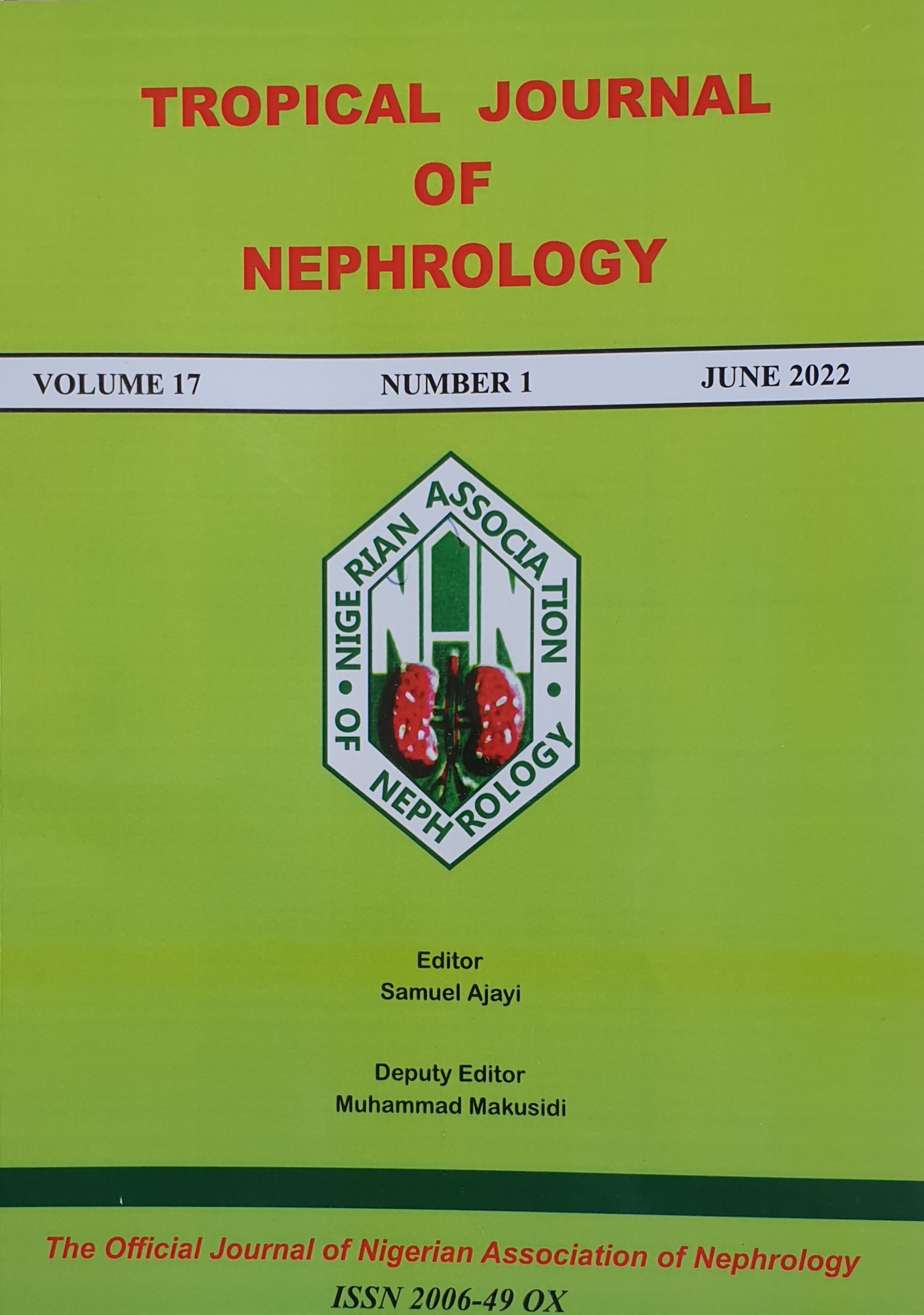Childhood Acute Post-infectious Glomerulonephritis: A Study of Clinical Profile and Outcomes at the University of Abuja Teaching Hospital, Abuja, Nigeria, 2016 to 2021
Main Article Content
Keywords
Abstract
Background: Acute post-infectious
glomerulonephritis (PIGN) is a common cause of
childhood morbidity in developing countries, the burden
of which reflects low socio-economic conditions and
poor environmental and personal hygiene. In Nigeria,
temporal and geographical variations exist for the
epidemiology of PIGN but more information is
needed.
Materials and Methods: A retrospective review of
socio-demographic factors and clinical outcomes of
childhood PIGN at the University of Abuja Teaching
Hospital, Abuja, from January 2016 to December
2021.
Results: Out of 13,823 children, 506 were renal cases,
and 55 were PIGN, with PIGN accounting for 10.9
% of renal cases. Among the 50 PIGN studied, 32
were males (64%), with a male-to-female ratio of
1.7: 1 (p<0.009). The age range was 4 to 15 years,
with a median age of 8 years, and a majority (50%)
were of the school-age group (5-10 years) (p
<0.0031). Affected children were mostly (38, 76%)
from low socio-economic households (p=Â 0.0001).
The typical clinical features were passage of cokecoloured
urine (100%), peripheral oedema (90%) and
hypertension (90%); while the commonest laboratory
features were haematuria (100%), proteinuria (94%)
and decreased complement C3/normal C4 levels (30
of 30 subjects) Acute complications comprised acute kidney injury (56%), congestive heart failure (16%)
and urinary tract infections (14%). A majority (92%)
were discharged with a low case fatality rate of 4%
(2 deaths).
Conclusion: PIGN is common in our setting but with
a good clinical outcome. The need to improve the
citizenry’s socio-economic status and personal and
environmental hygiene cannot be over-emphasized.


